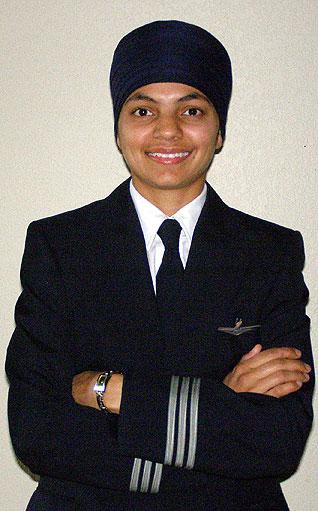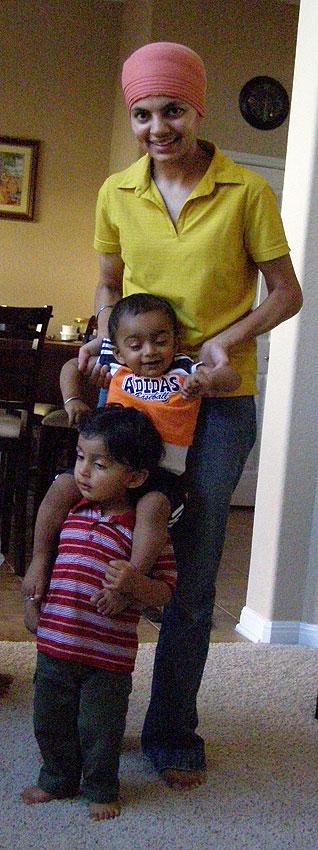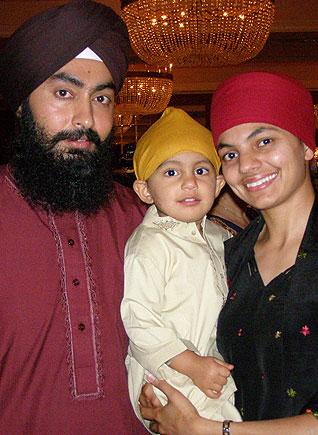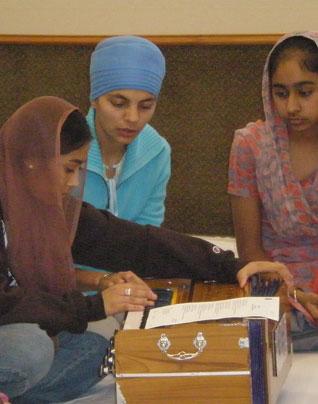People
Arpinder Kaur: Flying Through the Glass Ceiling
by PATRICK SMITH
I'm often asked why there aren't more female airline pilots.
It's obvious to anybody who travels that the vast majority of pilots, be they military or civilian, commercial or private, are men. Perhaps it's the military culture that, for many decades, dominated the pilot ranks at most airlines. Or maybe there's something about flying, in and of itself, that naturally discourages women.
Whatever the reasons, the field isn't as male dominated as it used to be.
By the mid-1990s, about 3 percent of all cockpit crew members in the United States were women - a total of about 3,500, representing a 30-fold increase since 1960. Because most of these pilots (along with many male pilots, myself included) were hired in a relatively short span during the pre-2001 boom years, they tended to fall into those unstable lower portions of airline seniority lists, and were most vulnerable to furlough. To wit, their total dropped sharply, to around 1 percent, following the airline apocalypse triggered by September 11, 2001.
Then, as regional carriers began hiring like crazy, it started climbing again. Now, with the industry in the throes of yet another downturn, with several regionals laying off staff, it is once again falling.
(In case you were wondering, the Organization of Black Airline Pilots reports around 700 African-Americans working for U.S. airlines, about 15 of whom are women. Those numbers, too, have been rising and falling in sync with hiring and furlough trends.)
In recent years, certain airlines have been especially well known for their recruitment of women - outreach efforts that resulted, in part, from prior lawsuits and/or a reputation for discrimination.
Before the previous industry meltdown, United had become home to about 500 women fliers, the highest number at any airline in the world. As maybe you'd expect, affirmative-action-style hiring at some carriers has incited the same controversies and feelings of resentment in aviation as in other fields.
But, on-the-job harassment of female pilots is exceptionally rare. Airline seniority lists, meanwhile, regimented strictly by date of hire, ensure equal pay and promotion for every crew member, male or female.
Several of my colleagues are women, and their presence on the flight deck has become so commonplace that, on that initial meeting in the briefing room, it hardly registers that I'm shaking hands with a woman.
(How am I doing? I keep wanting to use the word "aviatrix", but I need to be careful any time I take on the issue of women in aviation.)
While it's difficult to say exactly how many female pilots there are at the moment, I can tell you for certain how many women Sikh pilots there are: one.
That would be Arpinder Kaur, of San Antonio, Texas, a new first officer for American Eagle, the regional subsidiary of American Airlines. As far as anybody knows, she is the only female Sikh airline pilot in North America, and possibly anywhere.
Kaur lived in India until age 14, and later spent two years earning her initial FAA licenses and ratings at a flight school in Kansas City, Kansas.
Sikhism is a 500-year-old religion practiced by more than 25 million people around the world, including about 2 percent of all Indians. Sikhs are forbidden to cut their hair, and the dastaar (turban) is mandatory for all practising members. Once hired, Kaur needed an exemption from the carrier's uniform policy.
"They were very good about it", she says. "I asked to wear my turban instead of the standard hat, and they agreed to this without any hassle".
As explored in this space many times, nowhere have post-September 11 xenophobia and paranoia been more apparent than at the airport. Over the past eight years, countless people have been thrown off planes and subject to interrogation based solely on their appearance. The presence of beards, chadors, even T-shirt logos has sparked shameful scenes at airports all around the country.
Sikhism and radical Islamic terror have nothing in common, but we're being naive if we assume that every American realizes that, and is accepting of the idea of an airline pilot with a turban. Thus, this is a brave move on the part of both Kaur and her employer.
Congrats to both of them.
It's easy to wonder if the airline acted in fear of litigation or bad publicity, but it did the right thing and has set a good example.
I asked Kaur what she might have done had the carrier resisted, or what could happen in the future should another employer be less accommodating.
"I would consider pursuing legal channels, yes. But there was no need, and I thank AMR Corp. [the corporate parent of American and American Eagle] for giving me an opportunity to pursue my love of flying and accommodating the practices of my faith".
I should point out that Sikhism also requires its adherents to don the kirpan, a Sikh article of faith consisting of a small curved dagger. Getting AMR to grant an exemption is one thing; I reckon TSA would have proved more difficult.
Kaur says that co-workers have been mostly supportive, if a bit mystified.
"They are quite curious. Most know little or nothing about my religion and its practices, so it's a good opportunity for discussion".
And her passengers?
"While there have not been any complaints", she reports, "there are always inquisitive looks".
Nothing wrong with that.
I remember, a day or two after September 11, when a turban-wearing Sikh was hauled off an Amtrak train by the state police in Boston. His crime: being a Sikh.
Call me overly optimistic, but Kaur's presence in the cockpit, and the sense of welcome she is apparently receiving from colleagues and the traveling public, are perhaps a sign that not all is still crazy in America.
[Courtesy: Salon]
September 18, 2008
Conversation about this article
1: Zorawar Singh (Fresno, California, U.S.A.), September 18, 2008, 7:48 PM.
I am, for one, really impressed with this young lady; on the one hand, she took a bold step for a woman, similar to Mai Bhago when she led the 40 deserted Sikhs to Guru Gobind Singh Ji. "Khalsa mera roop hai khas // Khalsa mein hon karon nivas". My blessings are always with these courageous young Sikhs who, despite all the obstacles they face, did not deter from the path of Sikhi.
2: Tejwant (U.S.A.), September 19, 2008, 11:55 AM.
Sikhi is all about will-power because Sikhi does not impose anything, rather it gives the individual the tools to let the Sikhi spirit manifest itself from within. The will of our Fifth and Ninth Gurus, the will of the Four Sahibzadas, of their Father Guru Gobind Singh, of Sikhs like Bhai Mani Singh, Bhai Taru Singh and many many more, have proven to us that Sikhs can succeed in any field with their willpower and armed with the Sikhi Spirit. It would have been much easier for Arpinder Kaur to don a cap to look like others, but no, because the company knew she had the skills to pilot a plane and she has the inner will to pilot her Sikhi life with her bana. So the will persevered once again. Congratulations, Arpinder, for your inner grit. You showed you are outstanding in your profession and to stand out as a Sikh was the natural step. The will is what will make Sikhi's foundation stronger.
3: Pritam Singh Grewal (Canada), September 21, 2008, 5:53 PM.
Well done, Arpinder! Being a pioneer, you will hopefully open the cockpit doors for many daughters of Guru Gobind Singh.






